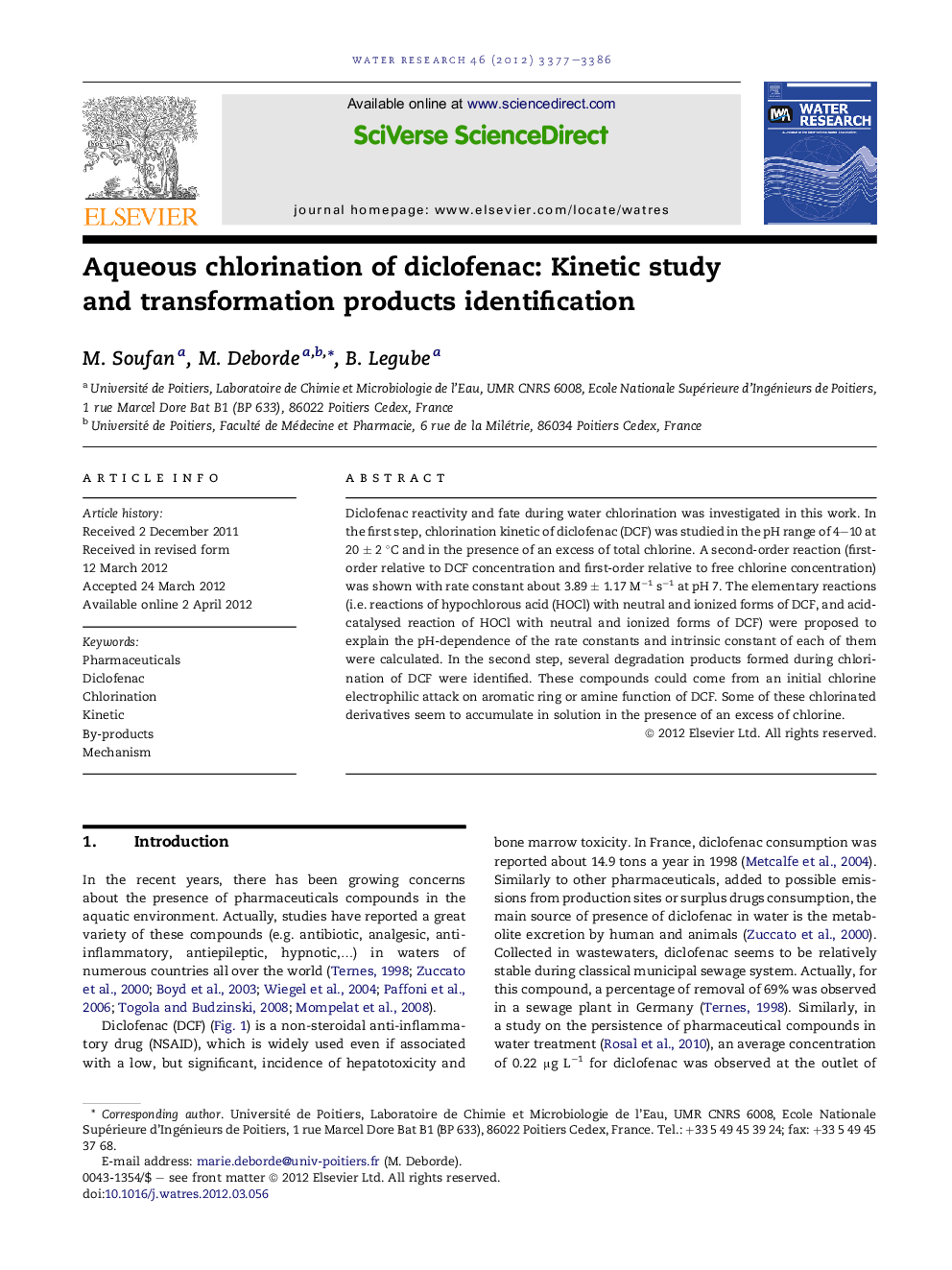| Article ID | Journal | Published Year | Pages | File Type |
|---|---|---|---|---|
| 4483353 | Water Research | 2012 | 10 Pages |
Diclofenac reactivity and fate during water chlorination was investigated in this work. In the first step, chlorination kinetic of diclofenac (DCF) was studied in the pH range of 4–10 at 20 ± 2 °C and in the presence of an excess of total chlorine. A second-order reaction (first-order relative to DCF concentration and first-order relative to free chlorine concentration) was shown with rate constant about 3.89 ± 1.17 M−1 s−1 at pH 7. The elementary reactions (i.e. reactions of hypochlorous acid (HOCl) with neutral and ionized forms of DCF, and acid-catalysed reaction of HOCl with neutral and ionized forms of DCF) were proposed to explain the pH-dependence of the rate constants and intrinsic constant of each of them were calculated. In the second step, several degradation products formed during chlorination of DCF were identified. These compounds could come from an initial chlorine electrophilic attack on aromatic ring or amine function of DCF. Some of these chlorinated derivatives seem to accumulate in solution in the presence of an excess of chlorine.
Graphical abstractFigure optionsDownload full-size imageDownload high-quality image (74 K)Download as PowerPoint slideHighlights► We investigated diclofenac chlorination at different pH levels. ► pH-dependence of rate constants was observed and elementary reactions were proposed. ► Reaction pathways were discussed according to the identified by-products. ► Slow degradation and high by-product stability are expected under water treatment conditions.
